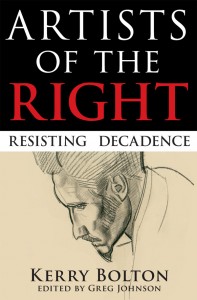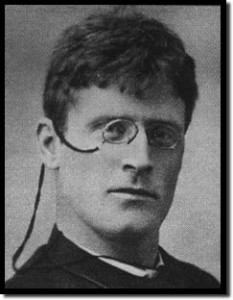Remembering Knut Hamsun
(August 4, 1859–February 19, 1952)
Posted By
Greg Johnson
On
In
North American New Right
| Comments Disabled
Knut Hamsun was born Knut Pedersen in Lom, Norway on August 4, 1859. He died in Grimstad, Norway, on February 19, 1952. The author of more than twenty novels, plus poems, short stories, plays, and essays, Hamsun was one of the twentieth century’s most influential writers. His rejection of both Romanticism and naturalism, his emphasis on outsiders and rebels, and his exploration of inner and sometimes extreme states of consciousness, made him a pioneer of literary modernism. He received the Nobel Prize for literature in 1920.
Indifferent to religion, Hamsun was most deeply influenced by Nietzsche, as well as by Dostoevsky and Strindberg. Hamsun rejected both Communism and capitalism, emphasizing agrarian and ecological values. With the rise of National Socialism in Germany, he at last found a political movement that reflected his own worldview. After the Second World War, Hamsun, his wife Marie, and his son Arild (who had joined the Waffen SS) were imprisoned by the Norwegian government.
 [2]
[2]You can buy Kerry Bolton’s Artists of the Right here [3].
We have published one piece by Hamsun, a previously untranslated letter opposing socialism and pacifism that was written during the First World War and later published in a Norwegian National Socialist journal during the Second World War: “Knut Hamsun Against the Socialists [4].”
Additionally, I wish to draw your attention to the following writings about Hamsun on this website:
- Alain de Benoist, “Knut Hamsun [5]” (Czech version here [6])
- Kerry Bolton, “Knut Hamsun [7]” (reprinted in Artists of the Right [8])
- Mark Deavin, “Knut Hamsun and the Cause of Europe [9].”
- Spencer J. Quinn, “Knut Hamsun’s Growth of the Soil [10].”
- Spencer J. Quinn, “Knut Hamsun’s Hunger [11].”
- Spencer J. Quinn, “Knut Hamsun’s The Women at the Pump [12].”
- Quintilian, “Knut Hamsun’s Pan [13].”
- Robert Steuckers, “Paganism and Vitalism in Knut Hamsun and D. H. Lawrence,” Part 1 [14], Part 2 [15]
- Anonymous, “Knut Hamsun: Saved by Stalin [16]?”
 [17]Hamsun’s Growth of the Soil (1917) is his longest but most accessible novel; it won him the Nobel Prize. Hamsun’s breakthrough novel is Hunger (1890), which is one of the most unsettling books I have ever read — up there with Mishima’s best work. Other highly recommended shorter, early novels are Mysteries (1892) and Pan: From Lieutenant Thomas Glahn’s Papers (1894).
[17]Hamsun’s Growth of the Soil (1917) is his longest but most accessible novel; it won him the Nobel Prize. Hamsun’s breakthrough novel is Hunger (1890), which is one of the most unsettling books I have ever read — up there with Mishima’s best work. Other highly recommended shorter, early novels are Mysteries (1892) and Pan: From Lieutenant Thomas Glahn’s Papers (1894).
As a young man, Hamsun spent four years in the United States, which gave him an abiding distaste for Anglo-Saxon culture and capitalism — convictions that were hardened during the Second Boer War. See Knut Hamsun Remembers America: Essays and Stories, 1885–1949, ed. and trans. Richard Nelson Current (Columbia: University of Missouri Press, 2003).
For a biography of Hamsun, I highly recommend Robert Ferguson, Enigma: The Life of Knut Hamsun (New York: Farrar Straus Giroux, 1987). I have not read Ingar Slettin Koloen’s Knut Hamsun: Dreamer & Dissenter (New Haven: Yale University Press, 2009), but it is supposed to be definitive. Finally, I highly recommend Swedish director Jan Troell’s 1996 biopic Hamsun, starring Max von Sydow as Hamsun.
* * *
Like all journals of dissident ideas, Counter-Currents depends on the support of readers like you. Help us compete with the censors of the Left and the violent accelerationists of the Right with a donation today. (The easiest way to help is with an e-check donation. All you need is your checkbook.)
For other ways to donate, click here [18].
